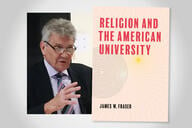You have /5 articles left.
Sign up for a free account or log in.

Istockphoto.com/alexyustus
Diversity planning begins with a plan. Does your unit have one? Is it publicized on your departmental home page? Does your plan include realistic action items assessed annually? In this essay, I’ll describe how you can create, update and share a stand-alone diversity plan that puts everyone on record.
In 2004, I chaired the first diversity committee in my college. We all agreed that departments could do better. Essentially, we had grown weary of hearing about the importance of diversity without supporting evidence to document progress, accountability and commitment. We focused on where such a commitment was likely to be found across departments: mission statements, strategic plans and stand-alone plans.
We distributed the following simple survey to 20-plus units in the College of Liberal Arts and Sciences at Iowa State University:
- Does your department have a mission statement? (If no, go to No. 4)
- Is diversity mentioned in your mission statement?
- Is your mission statement public with a link on your departmental home page?
- Does your department have a strategic plan? (If no, go to No. 7)
- Is diversity mentioned in your strategic plan?
- Is your strategic plan public with a link on your departmental home page?
- Does your department have a diversity plan independent of your mission statement and/or strategic plan? (If no, do not answer No. 8)
- Is your diversity plan public with a link on your departmental home page?
The results did not impress. Only my unit, the Greenlee School of Journalism and Communication, had a stand-alone plan at the time. The school also cited diversity in its mission statement and strategic plan. Only 35 percent of departments mentioned diversity in mission statements, while 55 percent did so in their strategic plans.
In 2016, I did the survey again for a presentation at our annual Iowa State Conference on Race and Ethnicity. Again, the results were disappointing: 30 percent of departments mentioned diversity in mission statements, and 64 percent noted them in their strategic plans. Four units out of 24 had stand-alone diversity plans.
I do not know how my college fares in 2019. I do know that public universities in Iowa are experiencing diversity-related issues, including racist slurs and demands for more accountability. Administrators are responding proactively, but more needs to be done.
This is not an Iowa problem but a national one. I can make that claim as a past elected member of the Accrediting Council on Education in Journalism and Mass Communications. (My term expired in May.) Diversity plans are required for ACEJMC accreditation. Nonetheless, units continue to fail the council’s standard, which not only includes a stand-alone plan but also one aligned with an inclusive curriculum and a diverse faculty and student population.
Patricia Thompson, the council’s executive director and assistant dean in the University of Mississippi’s journalism school, emphasizes the importance of stand-alone diversity plans that explain, in measurable ways, what is being done to achieve inclusive curricula and a diverse faculty and student body. Stand-alone plans also ensure a supportive climate for working and learning. “This is particularly important not only for communications schools and programs,” she states, “but also for all university departments as they educate students to thrive in a diverse, global society.”
In essence, stand-alone plans put a department, school or college on record. True, some plans are mere window dressing; but once those plans are created and, more important, publicized, faculty members and administrators can be held accountable, especially through an annual assessment.
Inclusive Documents
Before creating or updating a stand-alone plan, make sure that your unit mentions diversity in mission statements and strategic policies. All three documents should complement each other for a coherent commitment to inclusion.
Mission statements remind faculty members about their primary research, teaching and service obligations and objectives. Such statements usually are one or two sentences. For instance, the Greenlee School expresses support for understanding the First Amendment and fostering scholarship that contributes to theory and professional practice. Here’s our diversity declaration: “Emphasize communication in an increasingly diverse and multicultural world.”
Strategic plans are more comprehensive than mission statements, usually updated every five years or so in long-range planning committees. Such plans express how the unit aspires to innovate in research, teaching and service. You can easily add a diversity-based stratagem. For instance, a department might establish benchmarks for inclusive research across methodologies, advocate for inclusivity in course offerings and recognize or reward diversity-based service.
Unlike mission statements, strategic plans must include indicators and evidence by which progress can be assessed. The Greenlee School strategic plan recognizes “efforts to offer an inclusive curriculum that values diversity and incorporates multicultural viewpoints in courses.” Our indicators mandate periodic course mapping -- surveys distributed to professors -- to track student exposure to diversity topics in syllabi and lectures. We also administer surveys to internship supervisors to gauge our students’ awareness about diversity issues in advertising, journalism and public relations.
Here are sample statements that survey respondents must respond to affirmatively or not:
- Intern works ethically in pursuit of truth, accuracy, fairness and diversity.
- Intern shows sensitivity to diversity and cultural issues in verbal and visual communication.
In our most recent survey, concerning “accuracy, fairness and diversity,” internship supervisors scored advertising majors 4.74 on a five-point scale, journalism majors 4.63 and public relations majors 4.68 -- for an average positive score of 4.68. Concerning “sensitivity to diversity and cultural issues,” scores were 4.65 for advertising, 4.63 for journalism, 4.62 for public relations and 4.63 for all majors. Such external measures indicate substantive evidence of quality.
Components of a Plan
Diversity plans have structure, like any other formidable document:
- A preamble that makes a commitment to the cause.
- A definition, which articulates the dimensions of diversity.
- Action items, which outline goals with specific details.
- Assessment, which explains how goals will be measured.
Here is the preamble from the Greenlee School diversity plan:
The faculty and administrative leadership of the Greenlee School of Journalism and Communication are fully committed to maintaining an intellectually diverse, nondiscriminatory and multicultural environment. The previous version of this plan carved a pathway that enabled the Greenlee School to win the 2014 [Association for Education in Journalism and Mass Communication] Diversity and Equity Award. We uphold those values and are inspired by the award to aim even higher. We seek to maintain an inclusive curriculum, a diverse faculty and student population, and a welcoming, supportive, and celebratory climate.
Our faculty committee did research at peer programs to come up with its definition of diversity, which also aligned with Iowa State’s definition. Specifically, the committee focused on communication programs that won diversity awards, soliciting plans from Penn State University, Louisiana State University and the University of Southern California, among others.
As a result, we were able to broaden definitions of diversity. Ours included considerations about personhood and character associated with internal, external and organizational identities, including:
- Racial and ethnic identity, age, gender, sexual orientation, physical and/or mental abilities;
- Religion, education, socioeconomic class background, work experience, marital and parental status, appearance, geographic location;
- Management status, classification, field of study, seniority/rank and union affiliation.
Our action items were realistic, including these tenets:
- Ensure diversity, and diversity training, of faculty members serving on search committees.
- Recruit intentionally to encourage diverse applicant pools with the intent of matching or surpassing Iowa State University faculty demographics.
- Widely distribute information about open faculty positions in a variety of publications and at conferences.
- Facilitate faculty mentorship to assist with the tenure and promotion process.
- Strive to maintain gender equity in leadership positions.
- Ensure equity in pay and rank.
After updating our plan, the diversity committee was tasked with assessing each action item. Assessment is vital in ascertaining progress or setbacks. Direct measures typically provide external evidence of quality (awards, publications, surveys), and indirect measures demonstrate internal perception of quality (course updates, workshops, student evaluations).
Our plan mandates these measures:
- Conduct periodic course mapping to show evidence of diversity in courses and syllabi.
- Create and offer diversity-based courses every semester.
- Invite speakers to address diversity issues.
- Organize events and workshops for students and faculty members that pertain to critical issues in diversity and inclusion.
- Distribute information to faculty members and students that raise awareness.
- Monitor internships for evidence of diversity awareness.
At the last faculty meeting of the semester, the diversity committee assembles a report for the faculty. Assistant professor Kelly Winfrey, chair of our diversity committee, says the report engages everyone in the process. “Surveying faculty about their diversity work helps us celebrate each other’s accomplishments and learn from the efforts of our colleagues,” she states. The report also serves as a guide for the work her committee can do in the next academic year to enhance diversity and inclusion efforts.
Cautionary Words
If you are an administrator who sees value in departments creating diversity plans, keep in mind that genuine commitment must emanate from the professoriate. Nevertheless, administrators are obliged to promote inclusive policies, especially in mission statements and strategic plans, and can recommend that departments consider stand-alone diversity plans. The University of South Carolina, for instance, embraces an institutionwide approach. Shirley Staples-Carter, associate dean for diversity, equity and inclusion, is the first to hold this position in the College of Information and Communications. Her university has instituted an equity and inclusion plan as official policy. The entire university is accountable with the expectation that strategies within the plan will be met.
The South Carolina plan focuses on sustaining an inclusive learning, living and working environment that values all members of the university’s community, serving “the purpose of affirming the importance of equity and inclusion and its strategic value to the university,” she states.
Once approved, a diversity plan requires oversight by a dedicated committee. If your unit lacks a diversity committee, or your faculty is wary about creating another standing committee, you can appoint a subcommittee or ad hoc panel within an existing entity, such as curriculum or undergraduate committee.
Also, before creating or updating such plans, everyone should acknowledge that action items must be doable. In other words, you should carefully consider budget, legal and policy matters before putting goals on record that are beyond faculty control.
For instance, you can aspire to secure more diverse hires, but budget allocations usually have the last word on searches. You can hope to increase diversity in the student body, but you should be mindful about incentives to do that -- such as scholarships that exclude others based on ethnicity -- as that can trigger legal questions. You can promote safe speech but cannot guarantee it because of First Amendment considerations.
You should also write concisely about standards within a formal structure (i.e. preamble, definitions, action items, assessment). Use bullet points and avoid academic terms that the public may not know. Publicize your plan on the departmental home page, as prominence there can help recruit and retain a more diverse faculty and student body.
Finally, do not omit equity in your diversity planning. Equity identifies and eliminates issues of institutional bias, ensuring fairness for all in matters of salary, access, advancement and opportunity. In reviewing diversity plans in my consulting activities, this component typically is missing and is especially important in science, technology, engineering and math disciplines. You can have a diverse faculty with an inclusive curriculum that lacks equity, sabotaging departmental climate.
In fact, you might title your stand-alone plan “Diversity, Equity and Inclusion” and put on record goals to address salary inequalities across faculty ranks and support impartial advancement policies, among other nondiscriminatory initiatives.




